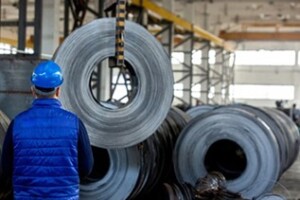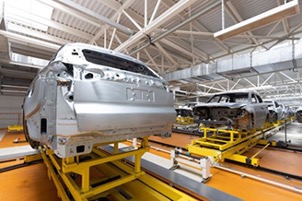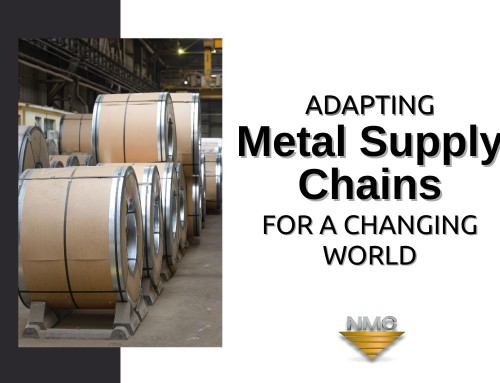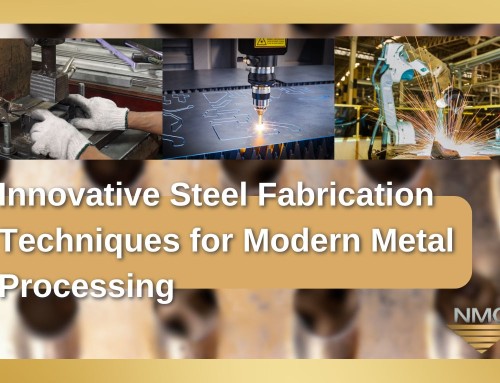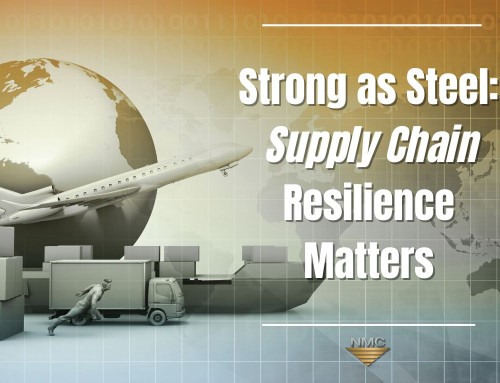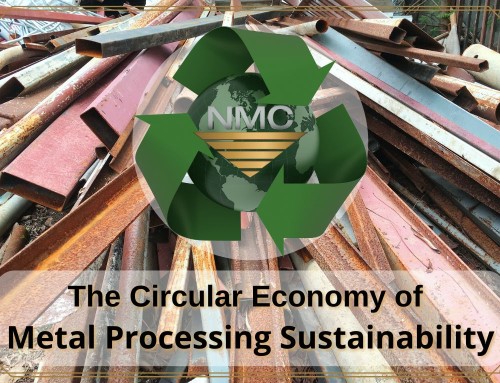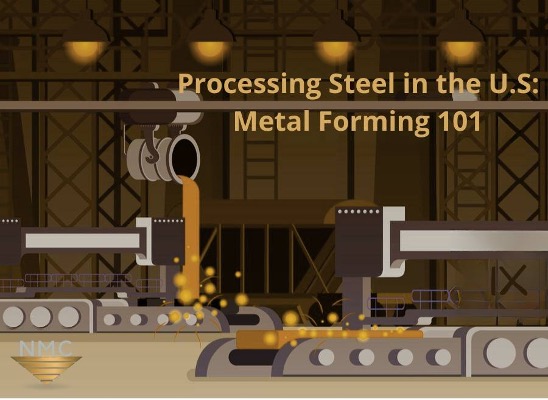
Metal forming is a process vital in the US steel processing industry. Renowned for its capacity to mold complex shapes and structures, it’s a process embraced by steel processors throughout North America for its capability to generate a wide array of essential products, from precision automotive parts to critical aerospace components.
Metal forming requires skilled professionals and advanced machinery, which is where steel service centers come in. These centers are the go-to source for metal processing, forming, and distribution, providing essential services that help transform raw materials into finished products.
What is Metal Forming?
Have you ever wondered how metals manufacturers create various shapes and sizes of metal parts? It’s thanks to the fascinating process of metal forming: the art of shaping a piece of metal into any desired shape. Various methods are involved in this process, from roll forming and bending to extrusion and forging.
The best part about metal forming is its efficiency and accuracy. With this technique, manufacturers can create large, sturdy metal parts with high precision. And that’s why it has become an indispensable part of the manufacturing industry today. Next time you observe a metal part, remember it was made using a specific process.
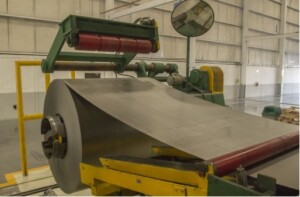
Metal Forming Process: The Basics
Metal forming is a captivating process that encompasses a diverse array of production techniques. From forging and casting to rolling and bending, there are countless ways to transform raw metal stock into a finished item. Regardless of the technique, manufacturers aim to create high-quality products that meet customers’ needs. So, whether you’re a metalworking expert or just curious about the industry, metal forming is worth learning more about!
Cold Working Process
In the cold working process, one applies force to reshape metal, changing its shape without adding or removing any material. This process can achieve the desired shape of the metal at room temperature.
Heat Treated Process
Metals can be changed in many ways to make them more robust, flexible, and wear-resistant. One way to do this is by heat treatment, a process of altering the physical or chemical properties of a metal through the use of heating or chilling, normally with extreme temperatures, to achieve the desired result or appearance. Heat treatment is a common method used by manufacturers to give metals intricate shapes that are impossible to achieve through simple bending. It can also make steel more flexible and last longer.
Five distinct metal-forming processes:
1. Roll Forming
Roll forming is a key manufacturing process that involves bending a long strip of metal, typically coiled steel, by passing it through consecutive sets of rolls. Each pair of rolls performs a part of the bend until the metal achieves the intended cross-sectional profile. This method is versatile, allowing for the creation of various shapes and sizes at room temperature.
The process allows for manipulation of metals to enhance their physical or mechanical properties, achieving attributes such as increased wear resistance or a superior strength-to-weight ratio. It is capable of producing parts with more intricate geometries, applicable to both cold-rolled and hot-rolled metals.
Roll Forming Advantages:
Several advantages of this process include high production rates and the ability to create complex shapes with minimal tooling requirements. It can form metals with high strength-to-weight ratios, it is also efficient and cost-effective due to its low waste generation and the simplicity of the process.
With roll forming, sheet metal, I, U, and H profiles, as well as circular and rectangular hollow sections, can be produced. Manufacturers can then use these components to create a variety of products, including solar racking, metal door frames, strut channels, and automotive body panels.
2. Bending
Bending is a process that lets you take a piece of metal and deform it using applied forces. With this technique, you can create curves, corners, and shapes. But how does it work? Well, the force required to bend metal depends on a few things, like its thickness, flexibility, and radius of curvature. After bending the metal, one can smooth it out to eliminate any bumps or irregularities.
Bending is a great way to combine two pieces of metal or create entire structures from sheet metal. Before bending, one must heat the metal to the right temperature. This helps make the molecules in the metal more pliable and more accessible to deform. You can bend metal by hand or use a machine to do the job.
Compared to other metal-forming processes, bending is cost-effective as it requires fewer tools and post-processing operations. The parts developed through bending are comparatively more manageable, as they need less tooling and post-processing operations. Bending is a process that offers high precision and accuracy in the final products it produces.
3. Extrusion
There is a process called metal-forming, where a die shapes a metal into a desired form by applying pressure. It’s called extrusion, and it can either be hot or cold, depending on the type of metal you’re working with. This method is perfect for creating objects with a hollow center, like pipes or tubing, and solid objects with a complex cross-sectional shape.
Extrusion can produce precise and uniform cross-sectional shapes, while dies with multiple openings can create parts with varying cross-sectional shapes. Plus, the process can create long, continuous material lengths, making it perfect for plumbing or electrical wiring applications.
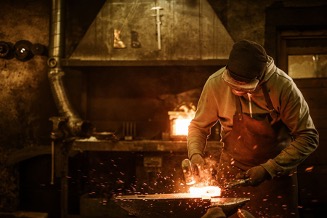
4. Forging
After extruding the metal, it is time to forge it using compressive forces to shape it. The impact of a hammer or the controlled pressure of a die can shape the metal depending on the desired outcome.
The exciting thing about forging is that it can be done at different temperatures, each with unique benefits. Cold forging is perfect for avoiding heat-softening or annealing of the workpiece. Warm forging increases the workpiece’s toughness and flexibility, while hot forging reduces the metal’s surface roughness and scale formation.
5. Deep Drawing
Deep drawing is a process to create three-dimensional sheet metal shapes? A widely used method in the automotive and aerospace industries involves using a blank metal sheet, which is pressed into a die to form a cylindrical part. People use this technique to create high-quality components. The metal sheet must be stretched beyond its elastic limit to achieve a unique shape. This requires a precise die design and careful control of the blank’s material properties.
Metal Forming and Its Numerous Practical Applications
From delicate jewelry to massive industrial machinery, metal forming is a critical technique that helps bring our ideas to life. Some typical applications include:
Automotive Industry
Did you know that the automotive industry is one of the most significant users of metal products? The average car contains over 1,984 pounds (900 kilograms) of steel. Manufacturers use metal forming processes to produce various vehicle components. From the tiniest screws to the most significant body panels, metal forming is the key to keeping our wheels turning!
Aerospace Industry
Metal forming is vital in crafting top-quality aerospace products, from chassis members to landing gear, engine parts, and structural components. These aerospace marvels are a true testament to the power of metalworking technology!
Pressure Vessels
Containers that can store liquids or gases at high pressures are known as pressure vessels. Interestingly, engineers design pressure vessels to withstand immense pressure. People use these vessels for various purposes, such as boilers, fuel, and storage tanks.
Pipe and Tube
Pipes and tubes are the unsung heroes of our daily lives. They are often used to transport liquids or gases from one place to another. The best part is that various pipes and tubes, such as conduit, drainage, gas, and water pipes, can be produced through this process. So, the next time you turn on the tap or light up your stove, take a moment to appreciate the wonders of pipes and tubes!
The steel processing industry in the US is highly competitive, and metal service centers play a critical role in providing metal forming, processing, and distribution services to customers across various industries.
About National Material Company
National Material Company (NMC) is a part of the National Material Limited Partnership (NMLP) steel division, one of the largest independent North American steel service centers.
NMC is proud to be ISO-9002 certified, with an unmatched commitment to safety. National Material Company leads the way through innovation, performance, and efficiency. Join the ranks of satisfied customers who trust NMC to get the job done right: (U.S.) 847-806-7200 or .email us at nmcquotes@nmlp.com

